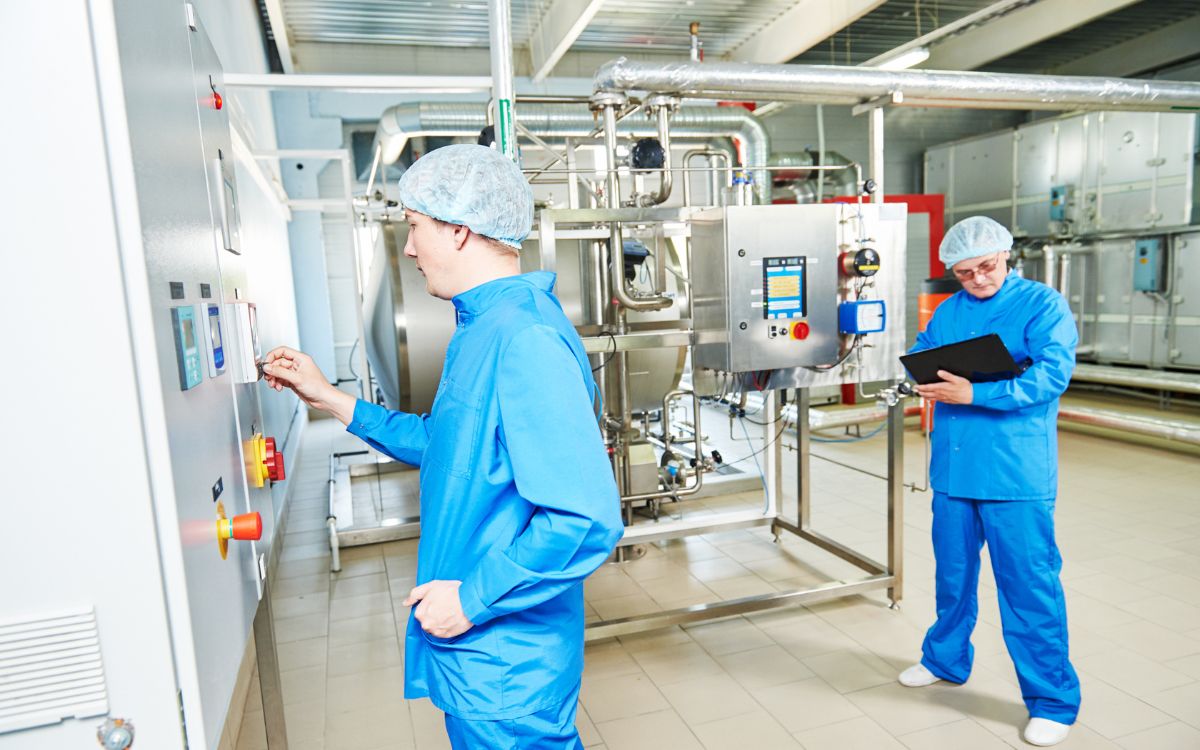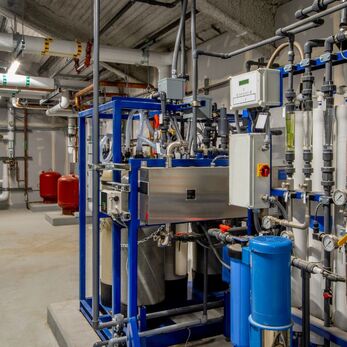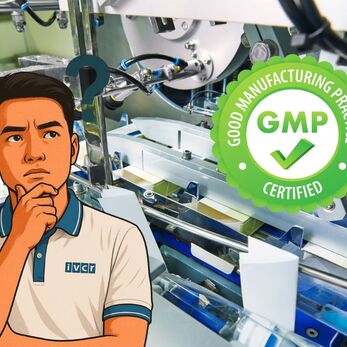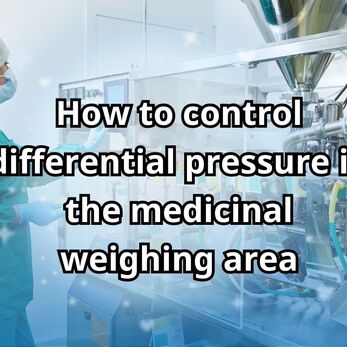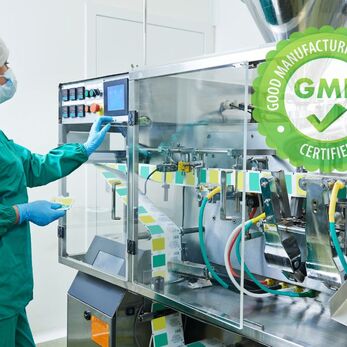- 1. Why Is Regular Maintenance of Cleanroom Equipment in the Pharmaceutical Industry Necessary?
- 2. Cleanroom Equipment in Pharmaceutical Manufacturing That Requires Regular Maintenance
- 3. Preparation Steps Before Cleanroom Equipment Maintenance
- 4. Detailed Maintenance Procedures for Each Cleanroom Equipment Type
- 5. Common Maintenance Mistakes in Pharmaceutical Cleanrooms
- 6. How to Develop a GMP-Compliant Preventive Maintenance Plan
- 7. Frequently Asked Questions about Cleanroom Equipment Maintenance
- 8. Call to Action - Don't Let Maintenance Become a Hidden GMP Risk
1. Why Is Regular Maintenance of Cleanroom Equipment in the Pharmaceutical Industry Necessary?
In the pharmaceutical industry—where cleanliness, sterility, and cross-contamination control are strictly regulated—regular maintenance of cleanroom equipment is not just a recommendation, but a mandatory requirement under standards such as GMP, ISO 14644, and WHO-GMP.
Risks of not maintaining equipment according to GMP standards:
- Equipment like Pass Boxes, FFUs, and Air Showers can lose efficiency over time, leading to loss of airflow and pressure control.
- Differential pressure gauges with calibration errors result in inaccurate environmental monitoring.
- Cleanroom lights with reduced illumination or heat generation can interfere with production processes.
This can lead to cleanroom environments exceeding allowable particle levels, which compromises ISO classifications (e.g., ISO 7, ISO 8), directly affecting product quality and GMP audit readiness.
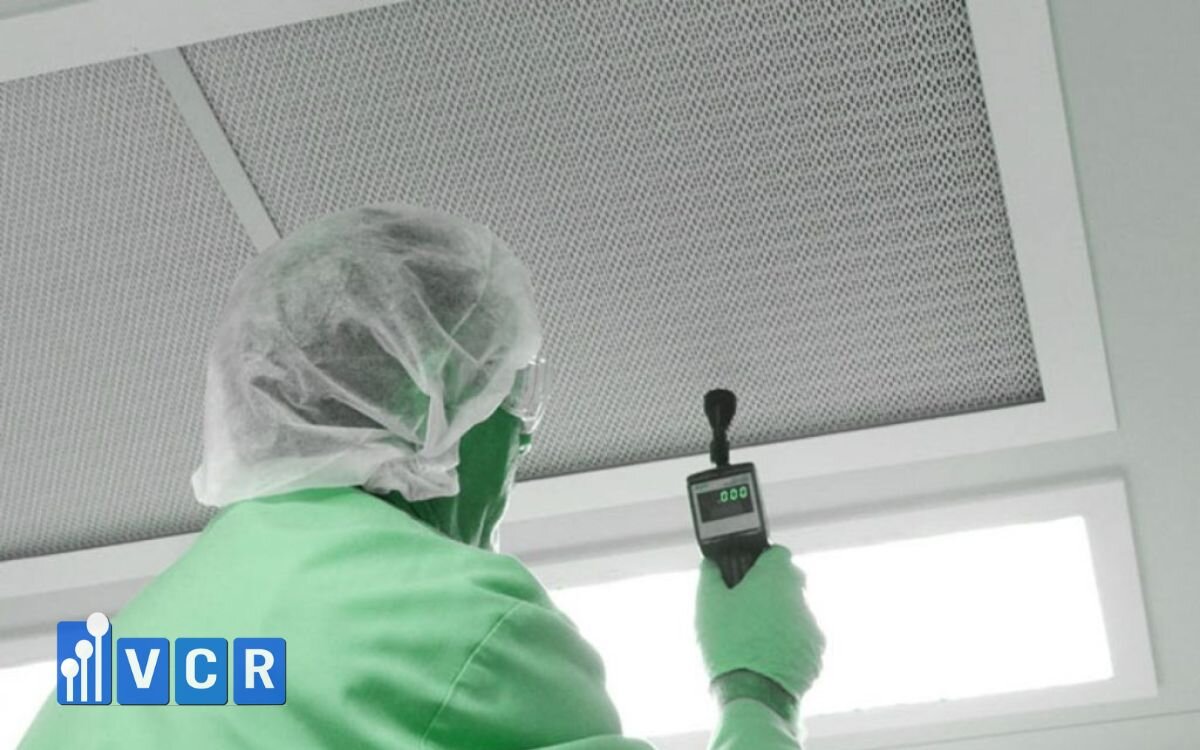
Standard requirements:
- EU-GMP (Section 3.4) states: “All critical cleanroom equipment must be maintained regularly according to a defined schedule, with proper documentation.”
- ISO 14644-2 mandates performance evaluation at defined intervals, including checks on airflow and pressure control systems.
- WHO-GMP emphasizes maintenance as an integral part of the quality control system.
2. Cleanroom Equipment in Pharmaceutical Manufacturing That Requires Regular Maintenance
Each piece of equipment in a pharmaceutical cleanroom serves a specific function in maintaining cleanliness levels, pressure differentials, airflow, and contamination control. Therefore, having a structured maintenance schedule is critical for ensuring compliance with GMP standards.
Maintenance schedule and responsibilities:
|
Equipment |
Maintenance Frequency |
Responsible Department |
Notes |
|
Pass Box |
Every 3 months |
Maintenance Technician |
Check sensors, electronic locks, sanitize inner surfaces |
|
FFU (Fan Filter Unit) |
Every 6 months |
HVAC Engineer |
Measure airflow, inspect HEPA filters, replace if needed |
|
Air Shower |
Every 3 months |
QA or Maintenance Team |
Check airflow speed, direction, and cycle duration |
|
Differential Pressure Gauge |
Monthly |
QA/QC |
Compare with calibrated equipment, adjust if needed |
|
Interlock System |
Every 6 months |
Maintenance Technician |
Check lock mechanism, clean sensors |
|
Cleanroom Lighting |
Based on runtime hours |
Technical Department |
Measure lux levels, clean covers, replace if degraded |
Note: Each piece of equipment should have its own SOP and maintenance log template to support GMP audits and inspections.
Proactive maintenance ensures continuous operation, minimizes unexpected downtime, and keeps the cleanroom system in optimal condition.
3. Preparation Steps Before Cleanroom Equipment Maintenance
Before performing any maintenance on pharmaceutical cleanroom equipment, thorough preparation is essential to ensure safety, minimize production disruption, and comply with GMP regulations. Here are three critical steps:
- Review GMP schedule and production plan
- Confirm maintenance timing does not overlap with production runs or validation activities.
- Consult the Master Production Schedule (MPS) and internal GMP audit schedule to avoid operational impact.
- If equipment is located in active production areas, coordinate with QA to approve shutdown timing.
- Ensure safety of the maintenance area
- Shut down electrical and air supply systems related to the equipment (apply Lock-out/Tag-out procedures if applicable).
- Post warning signs and notifications at the maintenance site to prevent unauthorized access.
- Inform departments including QA, Production, and EHS in advance to ensure readiness for emergency scenarios.
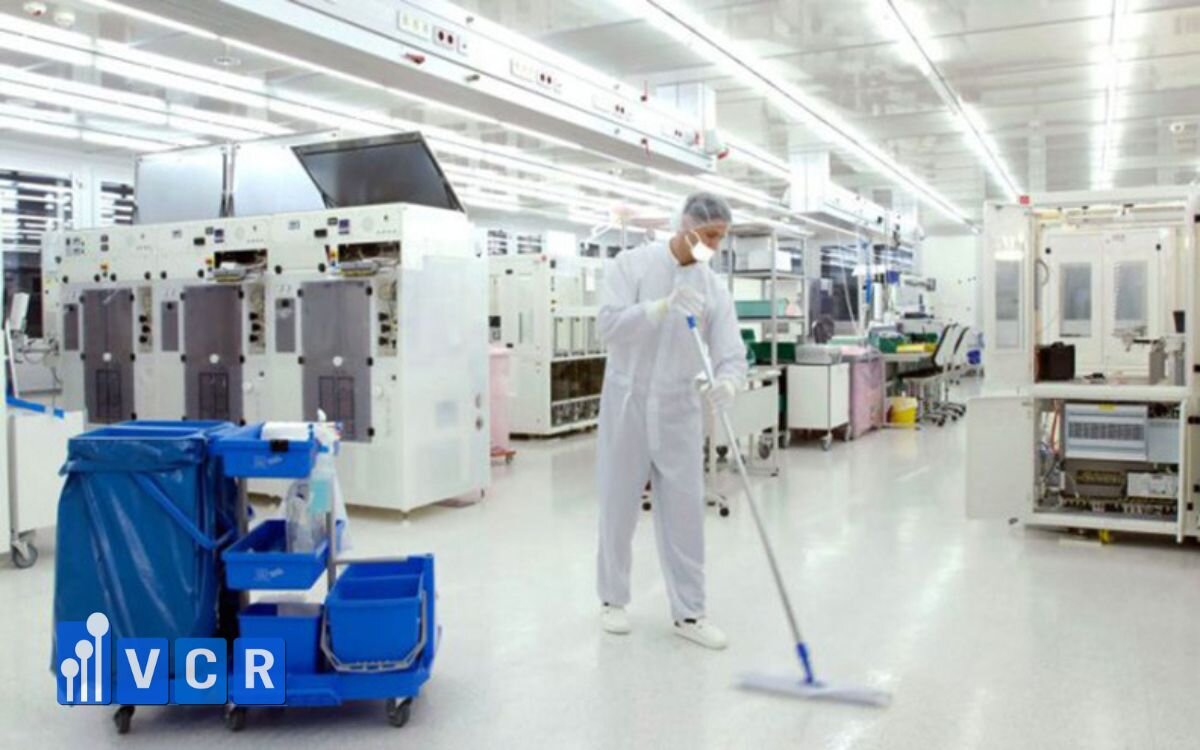
- Prepare tools, instruments, and cleanroom-approved materials
- Ensure availability of specialized tools such as airflow meters, pressure gauges, lux meters, and calibration devices.
- Use only cleanroom-compliant materials: non-linting wipes, residue-free cleaning solutions, nitrile gloves, ESD-safe air blowers.
- Print out SOP forms and maintenance checklists for documenting procedures and supporting audit traceability.
4. Detailed Maintenance Procedures for Each Cleanroom Equipment Type
To ensure optimal cleanroom performance in pharmaceutical manufacturing, each equipment type must be maintained according to a defined technical procedure. Below are detailed guidelines for key cleanroom equipment:
FFU - Fan Filter Unit
Objective: Maintain stable airflow and particle filtration efficiency as per ISO/GMP cleanroom classification.
Procedure:
- Inspect motor vibration and noise levels.
- Measure airflow at the outlet using an anemometer.
- Record and compare pressure differentials before and after the HEPA filter.
- Clean the outer casing with a residue-free solution.
- Replace HEPA filter if pressure differential exceeds the specified limit.
Note: Perform maintenance during non-operational hours (no-load condition).
Estimated Time: 1-2 hours per unit
Checklist:
- Motor runs smoothly
- Airflow meets design specification
- Pressure differential is within limits
- HEPA filter is intact and clean
- Outer surface has been cleaned
Pass Box (Material Transfer Hatch)
Objective: Ensure safe transfer of items between cleanroom zones without cross-contamination.
Procedure:
- Inspect interlock mechanism and door sensors.
- Sanitize the entire chamber with 70% IPA or an approved cleanroom disinfectant.
- Check UV system (if applicable); replace bulbs if dim or malfunctioning.
- Perform operational test: open/close each door to ensure proper interlock function.
Note: Do not use lint-shedding cloths or wipes inside the pass box.
Estimated Time: 30-45 minutes per unit
Checklist:
- Interlock functions properly
- Door sensors operational
- UV lamp functioning with adequate brightness
- No visible dust accumulation
- Maintenance logged

Air Shower
Objective: Remove surface particles from personnel and items before entry into cleanroom zones.
Procedure:
- Inspect door switches and activation sensors.
- Measure airflow speed at nozzles.
- Clean or replace the primary filter and wipe down the cabin.
- Test full operation cycle (entry-blow-exit).
Note: Replace primary filter if used for more than 3 months.
Estimated Time: 1 hour per unit
Checklist:
- Air velocity > 18 m/s at nozzles
- Doors close tightly without leakage
- Filters clean and free of dust
- Operation cycle tested three times
Differential Pressure Gauge
Objective: Monitor and control pressure differences between cleanroom zones to prevent reverse contamination.
Procedure:
- Compare readings with a calibrated reference gauge.
- Record deviations; recalibrate if variance > ±5 Pa.
- Clean the display and check tubing connections for leaks.
Note: Documentation must be recorded in GMP-compliant logs and signed off by QA.
Estimated Time: 15 minutes per gauge
Checklist:
- Stable display readings
- Pressure differential within design specifications
- No air leakage at fittings
- Calibration recorded and verified
Cleanroom Lighting
Objective: Ensure adequate lighting in production areas without generating excess heat or particles.
Procedure:
- Measure illuminance (lux) at work surfaces using a lux meter.
- Clean the light covers with lint-free wipes.
- Inspect ballast, wiring, and bulb condition.
- Replace bulbs if brightness drops below 80% of specification.
Note: Avoid using harsh solvents that may cloud the light cover.
Estimated Time: 10-20 minutes per light
Checklist:
- Meets required brightness (GMP standard)
- Bulbs are clear and not burnt out
- No dust, smudges, or oil marks
- Cleaned thoroughly
5. Common Maintenance Mistakes in Pharmaceutical Cleanrooms
Even with established procedures, many pharmaceutical facilities encounter recurring maintenance errors that compromise cleanroom integrity and GMP compliance. Below are three common critical mistakes:
Failure to Maintain Detailed Maintenance Logs
- Missing documentation is a serious GMP violation.
- Makes it difficult to trace root causes in case of deviation.
- Typical issues include:
- Lack of calibration certificates
- Maintenance staff not signing off
- Missing electronic/scanned records
Recommendation: Each equipment type should have a dedicated SOP and maintenance log documenting:
- Date
- Person responsible
- Pre/post parameters
- QA verification
Use of Non-Compliant Cleaning Materials
- Using regular cleaning cloths can shed fibers, leading to secondary contamination.
- Harsh alcohol-based or ammonia cleaners may damage surfaces or sensors.
- Non-ESD-safe tools can damage sensitive electronics (e.g., interlocks, FFUs).
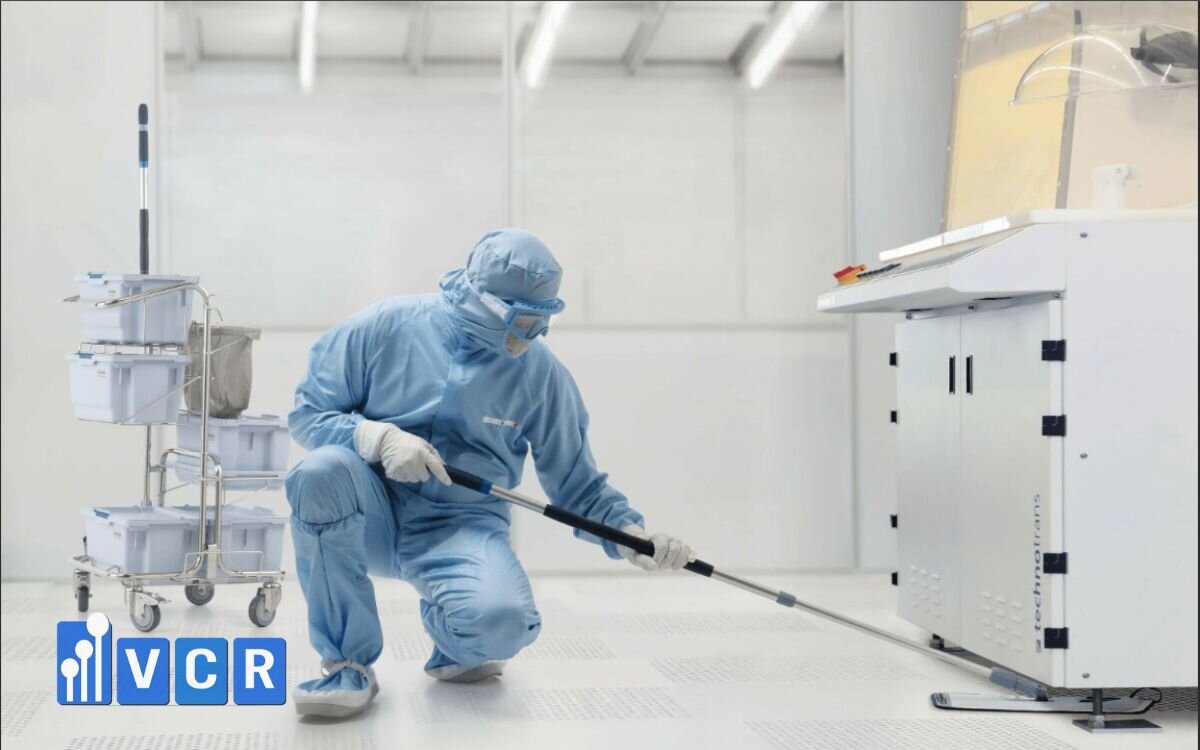
Recommendation: Only use cleanroom-grade materials, such as:
- Non-woven, lint-free wipes
- 70% IPA
- Nitrile gloves
- ESD-safe tools and equipment
Incorrect Maintenance Sequence Leading to Cross-Contamination
- Cleaning "dirty" areas (e.g., floors, Air Showers) before "clean" zones (e.g., HEPA filters) can spread particles backward.
- Not cleaning hands or wearing gloves before HEPA handling.
- Servicing FFUs before cleaning the room may cause dust to be blown into the clean space.
Recommendation: Always follow this sequence:
“From clean to dirty, top to bottom, inside to outside.”
6. How to Develop a GMP-Compliant Preventive Maintenance Plan
To ensure that cleanroom systems in pharmaceutical manufacturing operate reliably and remain compliant with GMP audit requirements, establishing a structured preventive maintenance plan is essential. Below are three key pillars for building a robust and traceable system:
Create Weekly - Monthly - Quarterly Maintenance Checklists
Each equipment type should have a dedicated maintenance schedule based on its impact on the cleanroom environment:
- Airflow control equipment (FFUs, HEPA filters): check every 3-6 months
- Cross-contamination control equipment (Pass Box, Interlock): check every 3 months
- Measurement instruments (differential pressure gauges): check monthly
The checklist should include columns such as: equipment - location - inspection items - technician - notes - QA sign-off.
Example:
|
Week 2 - September |
Equipment |
Inspection Item |
Performed By |
QA Sign-Off |
|
12/09/2025 |
FFU at weighing station |
Measure airflow |
Technician Bao |
QA Hoang |
|
14/09/2025 |
Pass Box - Packaging Room |
Test interlock |
Technician Cuong |
QA Minh |
Integrate Maintenance Schedule into Internal SOPs
- The maintenance plan should be incorporated into Standard Operating Procedures (SOPs) and change control protocols.
- When new equipment is installed or the cleanroom layout changes, the maintenance plan must be updated accordingly.
- Any schedule changes must be approved by QA or the Quality Control department.
Provide Regular Training for Maintenance and QA/QC Teams
On a quarterly or semi-annual basis, facilities should conduct:
- Internal training on proper maintenance procedures
- Risk awareness sessions for non-compliant maintenance
- Updates on new regulations from GMP, ISO 14644, WHO, PIC/S
- Post-training assessments to evaluate staff understanding and competency
7. Frequently Asked Questions about Cleanroom Equipment Maintenance
- How often should cleanroom equipment be maintained in pharmaceutical production?
Answer: Depending on the equipment type and usage frequency, general intervals are:
- Pass Box & Air Shower: every 3 months
- FFU: every 6 months
- Differential pressure gauge: monthly
- Cleanroom lighting: based on operational hours of the bulbs

- Is it necessary to record maintenance activities?
Answer: Yes. Maintenance logs are a mandatory GMP requirement. Proper documentation supports root cause investigation during deviations and serves as evidence during internal audits or regulatory inspections. - What solution should be used to clean cleanroom equipment?
Answer: Use 70% IPA (Isopropyl Alcohol) or other cleanroom-approved, residue-free disinfectants. Avoid using industrial alcohol, harsh chemical cleaners, or lint-shedding materials. - What are common mistakes during cleanroom equipment maintenance?
Answer:
- Lack of maintenance records
- Use of non-compliant materials
- Incorrect cleaning order (e.g., bottom to top)
- Failure to re-test equipment after maintenance
- Who is responsible for maintaining cleanroom equipment?
Answer: Typically, the technical or maintenance department is responsible. Some items require QA or QC participation for post-maintenance inspection and sign-off to ensure quality compliance.
8. Call to Action - Don't Let Maintenance Become a Hidden GMP Risk
Cleanroom equipment maintenance is not just about "keeping machines running"—it is a critical factor in GMP compliance, production efficiency, and product safety.
If your facility is:
- Lacking a structured maintenance system
- Missing standardized checklists, forms, or SOPs
- Struggling with GMP audits related to equipment maintenance
Let the VCR cleanroom experts support you.
We provide:
- Maintenance checklist templates for pharmaceutical cleanroom equipment
- GMP-compliant SOP samples for reference
- Consulting on setting up tailored preventive maintenance plans for your facility
Contact us today for a free consultation:
Hotline: 090.123.9008
Email: [email protected]
Website: https://phongsachduocpham.com/
Diep VCR
Vietnam Cleanroom (VCR) là một doanh nghiệp hàng đầu tại Việt Nam chuyên cung cấp thiết bị và giải pháp phòng sạch. Với hơn 10 năm kinh nghiệm phục vụ các dự án phòng sạch đạt tiêu chuẩn GMP, VCR tự hào mang đến các thiết bị kỹ thuật cao như: đồng hồ chênh áp, khóa liên động, đèn phòng sạch, Pass Box, FFU (Fan Filter Unit), buồng cân, HEPA Box, Air Shower, cửa thép phòng sạch, tủ cách ly (ISOLATOR), và nhiều loại phụ kiện chuyên dụng khác
Không chỉ là nhà cung cấp thiết bị, VCR còn là đơn vị phân phối độc quyền các sản phẩm từ các thương hiệu quốc tế như LENGE và BLOCK Technical, đồng thời cung cấp các giải pháp phòng sạch toàn diện cho các lĩnh vực như dược phẩm, điện tử, y tế, thực phẩm và mỹ phẩm. VCR có đội ngũ chuyên gia giàu kinh nghiệm, kiến thức chuyên sâu về phòng sạch, hỗ trợ tư vấn về tiêu chuẩn, thiết kế, thi công và vận hành phòng sạch theo chuẩn ISO, GMP, HACCP, ISO 14644
VCR hướng đến trở thành thương hiệu quốc dân trong ngành phòng sạch, với mạng lưới cung ứng rộng khắp, VCR có các văn phòng tại Hà Nội, TP. HCM, đáp ứng mọi yêu cầu từ xây dựng đến nâng cấp môi trường sản xuất đạt chuẩn
Email: [email protected]
Điện thoại: (+84) 901239008
Địa chỉ:
VP Hà Nội: 9/675 Lạc Long Quân, P. Xuân La, Q. Tây Hồ, TP. Hà Nội
VP Hồ Chí Minh: 15/42 Phan Huy Ích, P.15, Q. Tân Bình, TP.HCM
Hãy liên hệ với VCR để tìm hiểu thêm về lĩnh vực phòng sạch hiệu quả nhất nhé!



